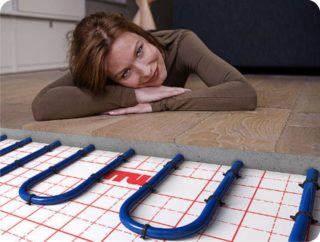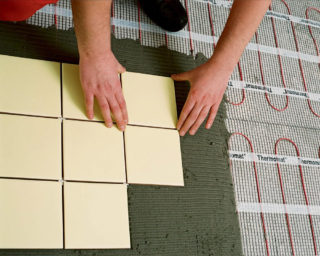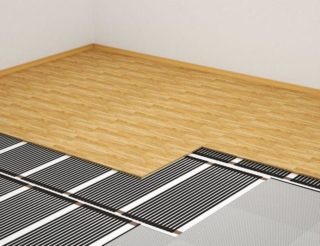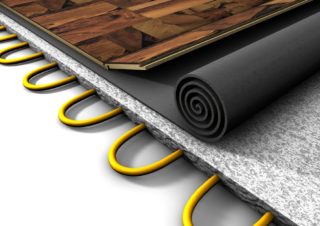Over the past few years, the issue of heating housing has become especially acute. The reason for this was the frequent interruptions in the operation of central heating in high-rise buildings, the increase in gas prices and the provision of heat to private cottages. Not surprisingly, people started looking for alternative ways to heat their homes. One of the best solutions was the installation of a warm floor. Even in the case of powerful radiators, the air warms up not as efficiently as with a warm floor. In the presence of underfloor heating, the heated air begins to rise from bottom to top, ensuring uniform heating of the room. This technology is just beginning to be in demand in the CIS countries, and in Europe it is already found in most modern houses. Further, you can learn about all the advantages of underfloor heating, methods and relevance of its installation.
Advantages of installing a warm floor
The unpopularity of this type of heating in the CIS countries is connected, rather, with the fear of people to change their usual stereotypes, rather than with the lack of financial resources. Not everyone believes that in winter frost conditions it is possible to heat a house using this technology. In fact, it is worth recognizing that underfloor heating is an extremely effective and advanced solution for heating living quarters. The advantages of this system have been confirmed by almost all European countries, and in Norway about 80% of buildings are equipped with warm floors.
Compared to radiator heating, underfloor heating has a number of advantages:
- uniform and efficient heating of the room;
- admissibility of installation both in multi-apartment buildings and in private houses;
- the ability to adjust the temperature of each room and turn off the system in the event of a trip or a long absence from home;
- the possibility of using as an auxiliary source of heat;
- installation permissibility in both residential and office buildings;
- safe use with almost all types of floor coverings;
- ease of installation of the system;
- improvement of the interior and an increase in free space due to the lack of radiators and other elements of central heating;
- reliability and durability of operation.
The use of the floor will be especially pleasant for those who like to walk around the house with bare feet. And mothers of young children can no longer worry that their child will catch a cold while walking around the apartment.
Installation of underfloor heating under tiles
At the moment, the installation of the system under the tiles is carried out in the following ways:
- the heating element is placed in the screed, and then any coating is placed on the floor in the usual way;
- first, the screed is made, and only then the heating elements are laid between the plates and the screed itself;
- the entire underfloor heating system is installed underneath the installed floor covering. However, this method is most relevant in the case of installing film structures.
The first installation method is advisable if the system is installed in living rooms or a bathroom. In this situation, a cable heating system is purchased, which is laid under the tiles. Installation should be carried out on a layer of waterproofing material, on top of which the screed is located. If we are talking about an apartment building, where most often neighbors live under you, then a screed and additional layers of thermal insulation are not required. The system is laid directly under the tiles and filled with a layer of a special gel that insulates the heating elements.
Natural wood floor or laminate
If you decide to install a warm floor under the laminate, then a film heating element should be used during installation. The infrared floor makes it possible to lay on the existing screed, which does not baffle the owner with additional repair work. The system is installed on top of the insulation, and then covered with a layer of waterproofing and, as a result, the wooden covering itself. If you follow all the instructions for installing and using a system with a wooden floor, then you should not worry about safety.
Underfloor heating installation: what costs to expect
The amount of energy consumed during system operation will vary due to the following factors:
- weather;
- the area of the room and the number of heated rooms;
- type of flooring;
- the quality of the thermal insulation of the premises;
- frequency of use;
- mode of application.
According to the statistics obtained, on average, consumption values fluctuate around 160-205 W / m2 in the case of the main source of heating, and 105-160 W / m2 in the case of an additional source.











